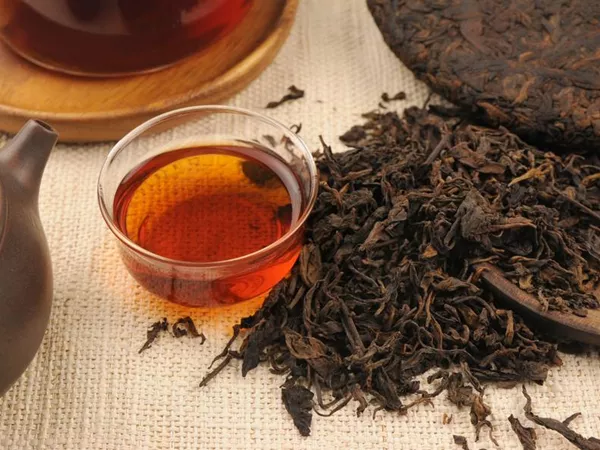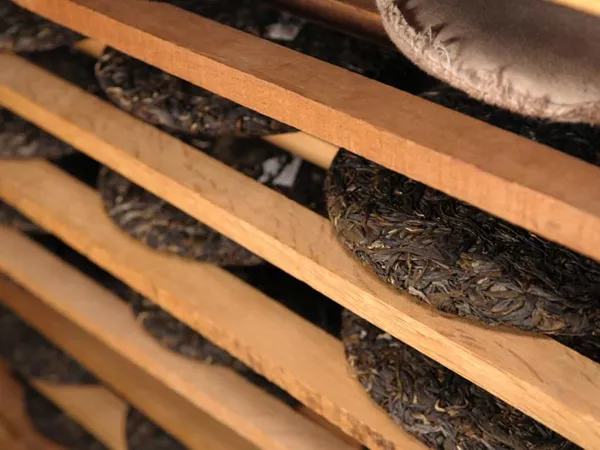Use of Pu er Cha (pu'er tea) in TCM
Please note that you should never self-prescribe TCM ingredients. A TCM ingredient is almost never eaten on its own but as part of a formula containing several ingredients that act together. Please consult a professional TCM practitioner, they will be best able to guide you.
Preparation: Collect young tea leaves, dry and roll them to form a shape before fermentation process which involves microbial fermentation and oxidation of the tea leaves.
Dosage: 3-10 grams
Main actions according to TCM*: Clears heat and dispels toxicity. Promotes the generation of body Fluids. Smooths digestion and eases hangover. Allows the release of toxicity from the surface.
Primary conditions or symptoms for which Pu er Cha may be prescribed by TCM doctors*: Headache Abdominal pain Dysentery Abdominal bloating Indigestion Hangover Measles
Contraindications*: Not suitable for patients whose Middle Burner is cold.
Key TCM concepts behind Pu er Cha's properties
In Traditional Chinese Medicine (TCM), Pu er Cha belongs to the 'Herbs that clear Heat and relieve Toxicity' category. Herbs in this category are used to clear inflammatory and infectious conditions, referred to as 'Internal Heat' in TCM. This is why most of the herbs in this category will have both antibacterial and antiviral properties. In TCM one has too much 'Internal Heat' in their body as a result of a deficiency of 'Yin' (which is Cold in nature, see our explanation on Yin and Yang) or, more commonly, an Excess of Yang (Hot in nature). Herbs that clear Heat and relieve Toxicity treat the latter while, at the same time, removing infectious toxins from the body. As such they tend to be Cold or Neutral in nature.
As suggested by its category Pu er Cha is Cold in nature. This means that Pu er Cha typically helps people who have too much 'Heat' in their body. Balance between Yin and Yang is a key health concept in TCM. Those who have too much Heat in their body are said to either have a Yang Excess (because Yang is Hot in nature) or a Yin deficiency (Yin is Cold in Nature). Depending on your condition Pu er Cha can help restore a harmonious balance between Yin and Yang.
Pu er Cha also tastes Bitter. The so-called 'Five Phases' theory in Chinese Medicine states that the taste of TCM ingredients is a key determinant of their action in the body. Bitter ingredients like Pu er Cha tends to have a cleansing action on the body by clearing Heat, drying Dampness and promoting elimination via urination or bowel movements.
The tastes of ingredients in TCM also determine what Organs and Meridians they target. As such Pu er Cha is thought to target the Stomach and the Liver. In TCM the Stomach is responsible for receiving and ripening ingested food and fluids. It is also tasked with descending the digested elements downwards to the Small Intestine. The Liver on the other hand is often referred as the body's "general" because it is in charge of regulating the movements of Qi and the Body Fluids. It also takes a leading role in balancing our emotions.
Research on Pu er Cha
The body weights of rats and their plasma triglyceride, cholesterol, and LDL‐cholesterol have been significantly reduced by feedings of pu‐erh tea to the animals.1
Sources:
1. Lin, Jen-Kun; Lin-Shiau, Shoei-Yn (February 2006). "Mechanisms of hypolipidemic and anti-obesity effects of tea and tea polyphenols". Molecular Nutrition & Food Research. 50 (2): 211–217. doi:10.1002/mnfr.200500138.
Use of Pu er Cha as food
Pu er Cha is also eaten as food. It is used as an ingredient in dishes such as Eggs cooked in Pu'er tea.


